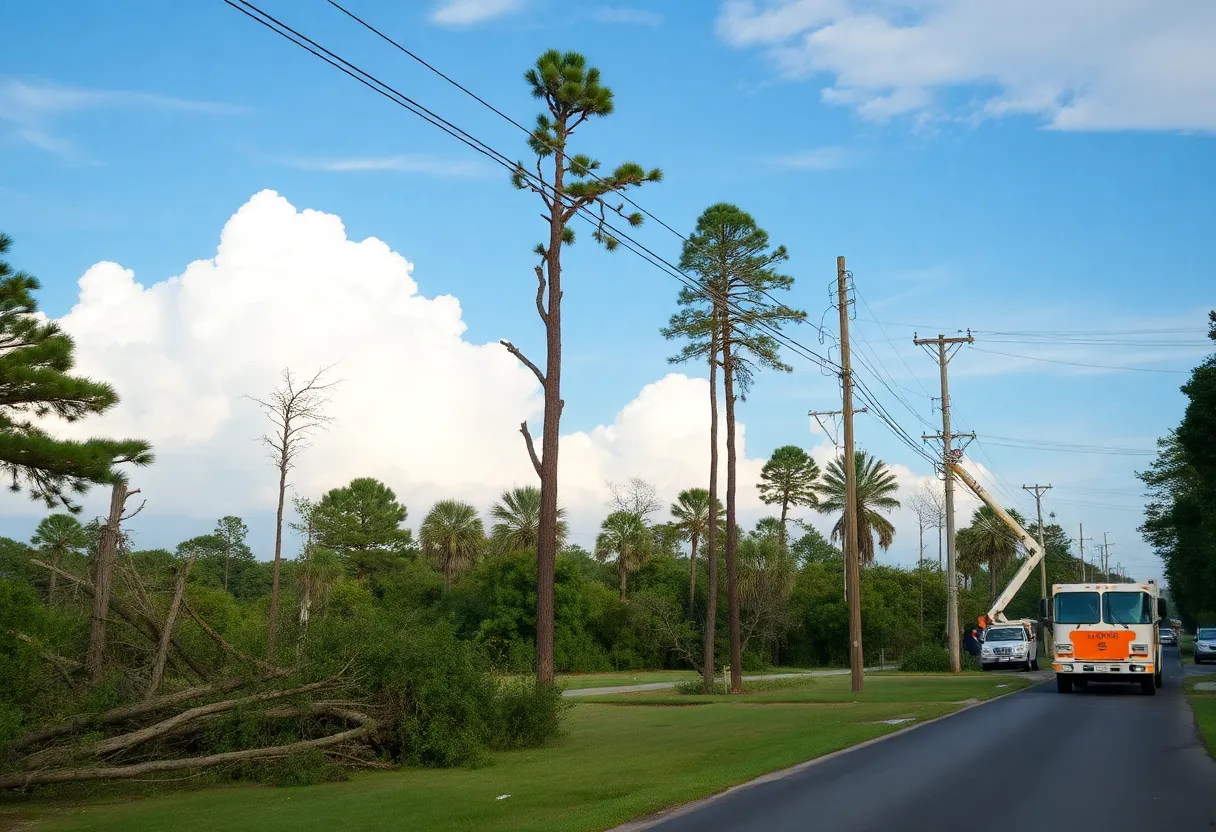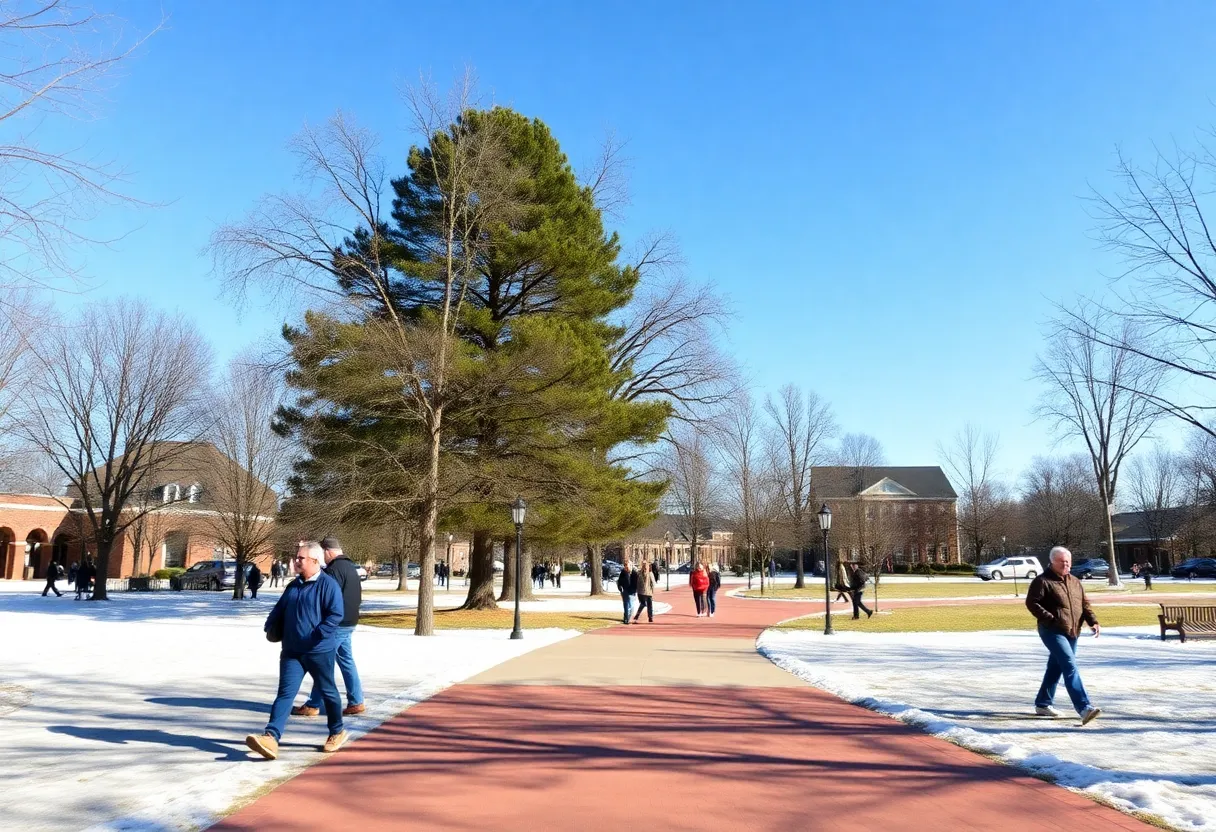News Summary
In the wake of Hurricane Helene, Duke Energy faces significant challenges in restoring power to over 1.34 million customers in the Carolinas. Under Tim Pearson’s leadership, the company is implementing strategies to enhance energy reliability and resilience, including advocating for new legislation and utilizing innovative technologies. The storm has led to a pivotal hearing by the Public Service Commission regarding storm recovery financing, emphasizing the company’s commitment to community engagement and infrastructural investments.
South Carolina is grappling with significant challenges following the impact of Hurricane Helene, which left approximately 1.34 million customers in the Carolinas without power. Tim Pearson, the president of Duke Energy’s utility operations in South Carolina, is tasked with overseeing power restoration and ensuring the reliability of energy delivery across the state.
Under Pearson’s leadership, who assumed the role in November 2024, Duke Energy operates with a focus on serving approximately 835,500 electric retail customers and 164,000 natural gas customers in South Carolina. His responsibilities extend to maintaining financial performance, leading regulatory and government relations, and fostering community engagement. Duke Energy’s proactive strategies during crises were highlighted as the company supported organizations like the Red Cross during Hurricane Helene.
The recent storm had a devastating impact, especially in the Upstate region, where over 99% of Duke Energy customers were affected. The emergency response faced significant challenges due to widespread damage, including downed trees and considerable debris, complicating the power restoration process. Lessons learned from Hurricane Helene will inform future strategies to strengthen the energy grid against similar weather events.
In addressing future energy reliability, Duke Energy is advocating for House Bill 3309, which seeks to secure a dependable energy future for South Carolina in light of ongoing economic growth. This proposed legislation emphasizes customer protections and promotes an “all of the above” energy approach, integrating various resources to enhance energy diversity and reliability.
Duke Energy’s resource plan is comprehensive, featuring hydrogen-capable natural gas, advanced renewable energy solutions, and the optimization of existing nuclear energy assets. Infrastructure enhancements play a crucial role in improving resilience. Strategies include tree trimming, pole and line upgrades, and cutting-edge self-healing technology, which functions akin to GPS, allowing for power rerouting that significantly improves system reliability.
As an example of the success of these innovations, in 2024, the application of self-healing technology prevented around 130,000 customer outages, saving over 320,000 hours of outage time. Additionally, Duke Energy provides customers with smart home technology options to help manage energy usage and support cost savings. The company also offers voluntary demand-response programs that offer financial incentives to encourage participation in energy load management.
Furthermore, the Duke Energy Foundation has actively contributed over $2 million since 2021 to combat hunger in South Carolina, enhancing the company’s community impact. Duke Energy has a strong financial history and has maintained cash dividends on its common stock for 99 consecutive years, affirming its stability and commitment to its stakeholders.
In response to Hurricane Helene’s aftermath, the Public Service Commission of South Carolina is set to hold a hearing regarding Duke Energy’s petition for storm recovery financing. The proposed storm recovery charge for Duke Energy Carolinas customers using 1,000 kWh is estimated to be $4.64 per month. This charge will be pivotal in assisting the company to recover costs associated with restoring power and enhancing future resilience following natural disasters.
Overall, Tim Pearson’s leadership is focused on fostering a reliable and sustainable energy future in South Carolina, highlighting the importance of community engagement, adaptive strategies, and infrastructural investments in the wake of Hurricane Helene and beyond.
Deeper Dive: News & Info About This Topic
- Upstate Business Journal: Behind the Brand – Tim Pearson
- Morningstar: Duke Energy Annual Meeting
- Duke Energy Foundation: Environmental Impact Programs
- Encyclopedia Britannica: South Carolina
- Post and Courier: South Carolina Public Service Commission Hearing

Author: HERE Greenwood
The GREENWOOD STAFF WRITER represents the experienced team at HEREGreenwood.com, your go-to source for actionable local news and information in Greenwood, Greenwood County, and beyond. Specializing in "news you can use," we cover essential topics like product reviews for personal and business needs, local business directories, politics, real estate trends, neighborhood insights, and state news affecting the area—with deep expertise drawn from years of dedicated reporting and strong community input, including local press releases and business updates. We deliver top reporting on high-value events such as the Festival of Flowers, Greenwood Community Theatre performances, and agricultural showcases at the Greenwood County Fairgrounds. Our coverage extends to key organizations like the Greenwood Chamber of Commerce and the Greater Greenwood United Ministry, plus leading businesses in manufacturing and healthcare that power the local economy such as FujiFilm Manufacturing and Self Regional Healthcare. As part of the broader HERE network, including HERECharleston.com, HEREColumbia.com, HEREGreenville.com, and HEREHiltonHead.com, we provide comprehensive, credible insights into South Carolina's dynamic landscape.





